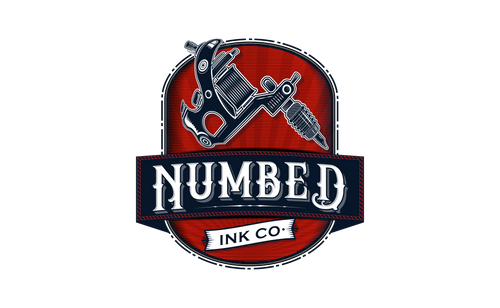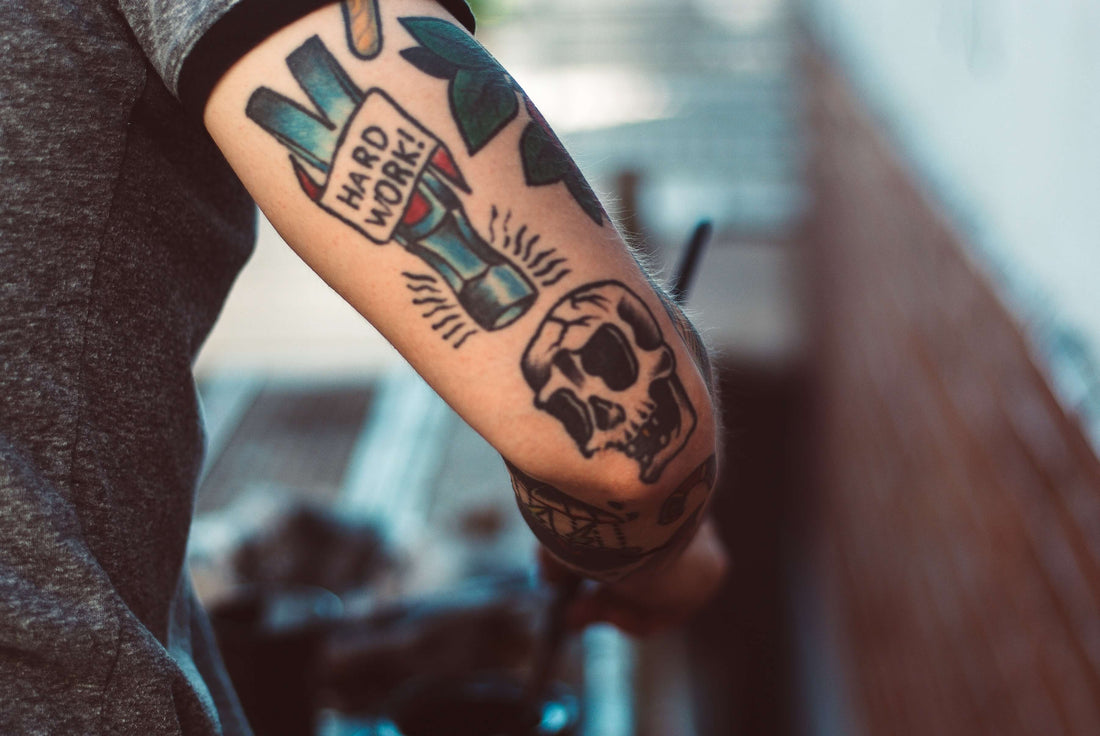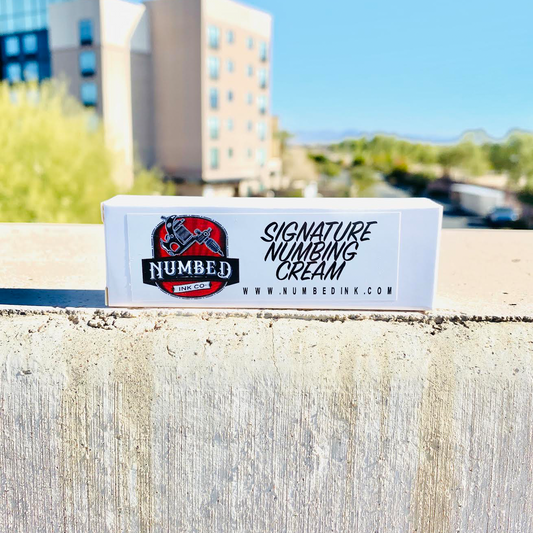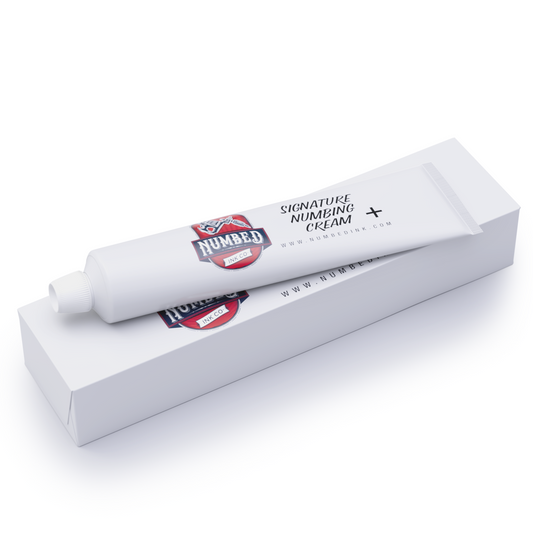Are you a proud owner of some fresh ink, ready to crush the healing process so you can show it off? There’s a good chance that someone you know recommended Aquaphor to you, but you weren’t sure if it’s the best option for your new tattoo. Many artists & ink enthusiasts recommend it because it’s affordable & accessible to everyone – but should it be the go-to aftercare solution? We don’t think so, and we’re going to share why, as well as provide alternatives that are better for your healing tattoo.
What is Aquaphor?
Aquaphor is a healing ointment designed to hydrate and protect your skin. Its primary ingredients include petroleum jelly, ceresin, lanolin alcohol, panthenol, and glycerin. When blended together, these ingredients are highly effective:
- Petroleum jelly - The primary ingredient, also as petrolatum, forms a thin barrier on the dry or wounded skin, locking in moisture and promoting the skin’s natural healing process.
- Glycerin - A powerful humectant, glycerin attracts and retains moisture, complimenting the hydrating strength of petrolatum.
- Panthenol - Also known as provitamin B5, panthenol helps soothe and regenerate the skin. It reduces inflammation, supports wound healing, and improves skin elasticity.
- Lanolin alcohol - This ingredient softens and smooths the skin as it continues to heal, accelerating cell regeneration and reducing the possibility of scarring.
Aquaphor is formulated for individuals of all ages, including infants, children, and adults, and it’s only $15-20, making it an accessible skincare product for nearly everyone. And its composition is gentle & fragrance-free, so it’s suitable for those with sensitive skin as well.
What is Aquaphor used for?
Aquaphor is commonly used to hydrate dry & cracked skin, heal wounds, and treat conditions like eczema. Many doctors recommend it for minor burns, post-operative wound care, and even diaper rash. If your hands, elbows, and heels are constantly dry, Aquaphor is an excellent healing solution.
But recently, many people have been using it as a tattoo aftercare solution. And what makes it so effective at healing dry & wounded skin is exactly what makes it so ineffective at healing tattoos.
Is it OK to use Aquaphor on a new tattoo?
If you want the best care for your new tattoo, there are far better options than Aquaphor. The semi-occlusive layer suffocates your new ink, slowing the recovery process. And though it’s a highly refined version of petroleum oil, it’s understandable that you wouldn’t want that anywhere near your healing skin.
Why do artists recommend Aquaphor for new tattoos?
If you use Aquaphor, it’s unlikely that you won’t have any issues. Your artist and some of your friends likely recommended it to you, which is probably how you heard about it in the first place. It’s a “fine” aftercare solution for tattoos, but many people have claimed that their tattoo faded after using the product. If you’re going to use it, wait at least 2 weeks or until the top layer of skin is fully healed.
If you don’t want to risk your hard-earned ink just because “everyone else does it,” let’s take a look at some common alternatives, both good & bad.
Aquaphor alternatives
Vaseline
Vaseline is also made from petroleum jelly, which means it’s also not a suitable alternative for a healthy tattoo aftercare routine. Just like Aquaphor, it traps moisture and bacteria, leading to infections and scarring.
Ink Balm
Numbed Ink’s Ink Balm is made from all-natural & organic ingredients and packed with skin-healing vitamins, lipids, and antioxidants to protect and heal your tattoo through every stage of the process. Unlike Aquaphor & Vaseline, it allows your skin to breathe & retain moisture while keeping out bacteria and other infectants.
Fragrance-free lotion
When it comes to tattoo aftercare, simple is usually better. If Ink Balm isn’t your thing, we recommend a white, fragrance-free lotion. If possible, try to find one made with organic ingredients, as artificial colors, scents, and ingredients will likely irritate your skin, delaying the healing process.
What your skin needs
Tattoo aftercare is quite simple, it really only comes down to a few things.
Cleaning
The most important aspect of aftercare is cleaning. Clean your tattoo at least twice per day to rid the area of germs, bacteria, and other possible infectants. If you don’t clean it properly, it will become infected and permanently damage. Simply put, clean your ink.
Moisturizing
Once you’ve cleaned the area, you have to hydrate the skin with lotion, Ink Balm, or a daily moisturizer. Apply lotion or moisturizer at least 3-5 times per day; Ink Balm just once or twice. These stimulate cellular regeneration, helping your wound to close faster and heal in a healthy manner.
Protection
If you clean and moisturize, you should be fine. But there are a few other things you must protect your skin from, namely the sun and bodies of water. After getting your new tattoo, stay out of the sun and pools, lakes, and oceans for at least 3-4 weeks. You should also be careful of sweat when working out and wear loose-fitting clothing to avoid overheating or rubbing directly on the skin. Just be mindful of the area whenever you’re moving around or making plans.
Patience
Tattoos heal much faster now than they used to, but they still take quite a bit of time. Most tattoos heal within 2-3 weeks, depending on the size, location, and your skin’s sensitivity. But if you clean, moisturize, and protect your skin on a regular basis, you’ll be able to show it off to your friends in no time.
Ultimately, your tattoo aftercare is up to you. But if you want your skin to heal quickly and your ink to last forever, there are better options than Aquaphor. Whatever you decide, make sure to clean and protect your ink as well.



